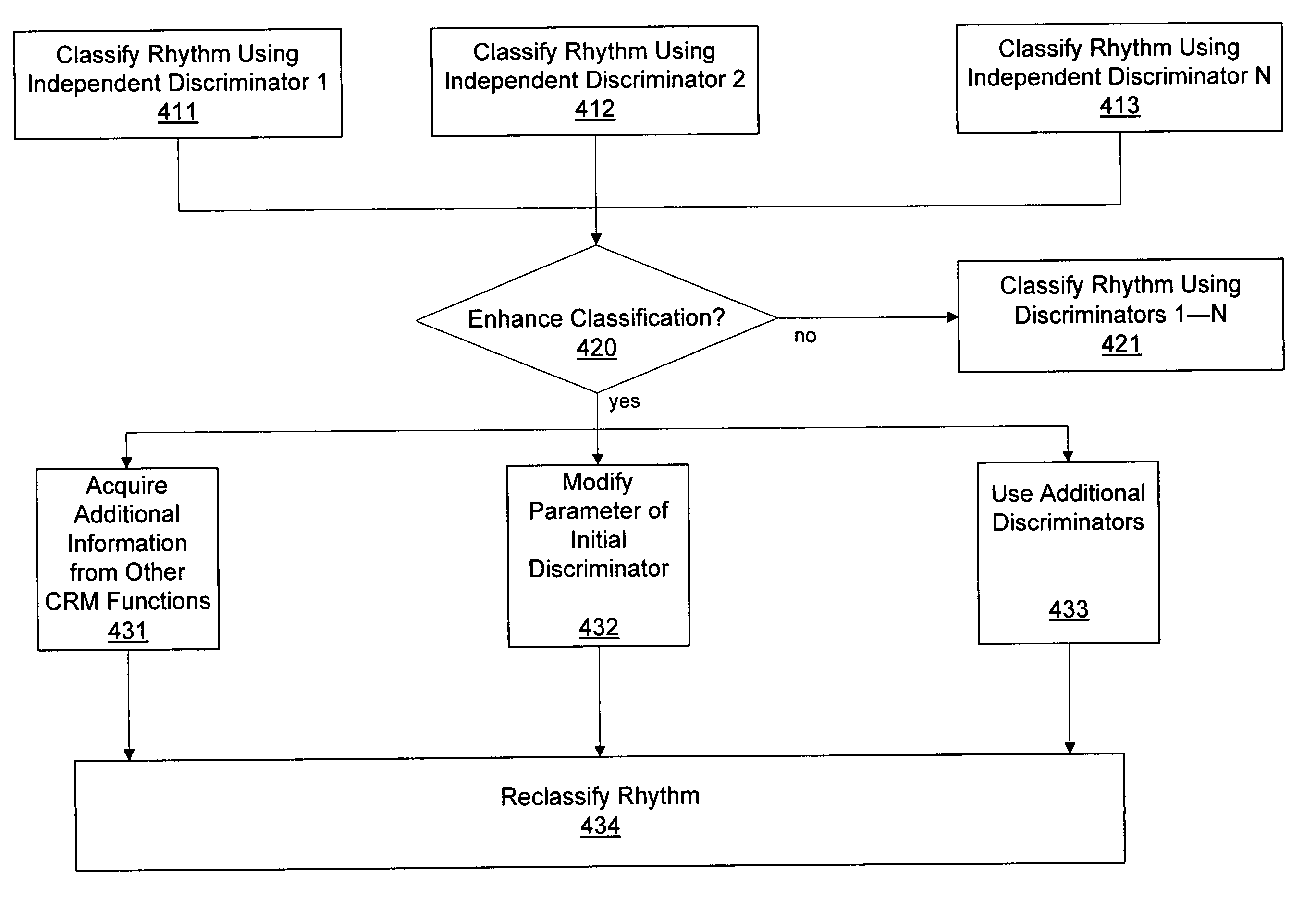Blending cardiac rhythm detection processes
a cardiac rhythm and detection process technology, applied in the field of classification, can solve problems such as potential life-threatening events, cardiac arrhythmias impair cardiac efficiency, and irregularities in cardiac rhythm coordination, and achieve the effects of enhancing rhythm classification, rhythm classification, and enhancing classification
- Summary
- Abstract
- Description
- Claims
- Application Information
AI Technical Summary
Benefits of technology
Problems solved by technology
Method used
Image
Examples
case 1 and 3
[0173] A>V and a Correlated and Stable Rhythm is Suddenly Uncorrelated.
[0174]In each case listed in Table 1, the rhythm is correlated to the SVR template and initially classified as SVT. For example, Case 1 identifies a rhythm that was initially classified as SVT, with morphology correlated to the SVR template, A>V, sudden onset, and stable V-rate. Case 2 identifies a rhythm that was initially classified as SVT, with morphology correlated to the SVR template, A>V, without sudden onset, and stable V-rate.
[0175]For cases 1 and 3, the following rules may be applied to determine if a rhythm shift has occurred when A>V and a correlated and stable rhythm is suddenly uncorrelated:
[0176]Rule 1: If the AV pattern and V rate are consistent, the type of rhythm is not changed. The possible reasons for non-correlation to the SVR template are morphological change or the cross chamber timing shift of the rhythm (rate channel vs. shock channel signal shift) during sustaining SVT at high heart rate....
case 2 and 4
[0179] A>V, Correlated and Unstable Rhythm is Suddenly Uncorrelated.
[0180]Rule 1: If the AV pattern and V rate are unchanged, the type of rhythm is most likely not changed. One or more processes for confirming that the rhythm remains unchanged may be implemented by calculating the correlation coefficient using a different template or using extended shift as described above.
case 5 and 7
[0181] A=V, Correlated and Stable Rhythm is Suddenly Uncorrelated.
[0182]Rule 1: If the AV pattern and V rate are unchanged, the type of rhythm is not changed. Confirmation may be implemented by calculating the correlation coefficient using a different template or using extended shift as described above.
[0183]Rule 2: When the rhythm becomes suddenly uncorrelated, and if the rate suddenly changes and becomes unstable, then the rhythm is changed from a stable SVT to an unstable SVT or VT. Confirmation of the rhythm change may be implemented by calculating the correlation coefficient using a different template or using extended shift as described above.
PUM
 Login to View More
Login to View More Abstract
Description
Claims
Application Information
 Login to View More
Login to View More - R&D
- Intellectual Property
- Life Sciences
- Materials
- Tech Scout
- Unparalleled Data Quality
- Higher Quality Content
- 60% Fewer Hallucinations
Browse by: Latest US Patents, China's latest patents, Technical Efficacy Thesaurus, Application Domain, Technology Topic, Popular Technical Reports.
© 2025 PatSnap. All rights reserved.Legal|Privacy policy|Modern Slavery Act Transparency Statement|Sitemap|About US| Contact US: help@patsnap.com



